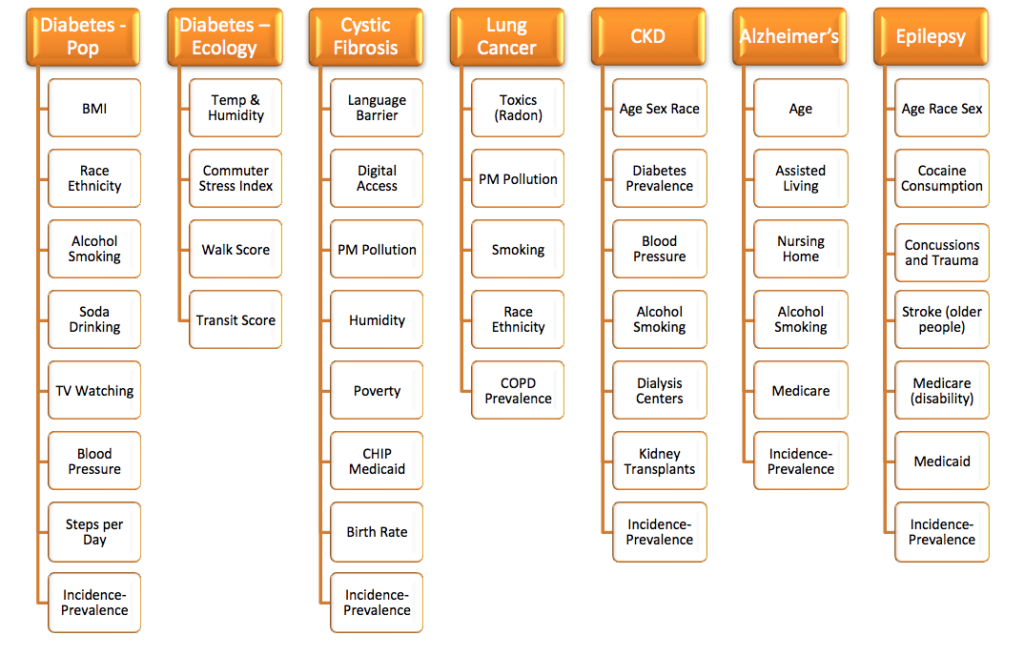Examples of Features for Different Disease States

Major Categories Impacting Drug Use

Panorama is our proprietary database. It started off as a foray into identifying profile variables of various populations. This was for a predictive model we were developing for a client to identify which physicians best respond to promotion. The newfound variables turned out to be a godsend and resulted in a big boost in the predictive power of the model. This was evidence we were onto something.
From then on, we poured time and energy in the project and went after 75+ truly amazing data sources. Now, years later, Panorama is 1,000+ variables strong and captures the dynamics of not only people but also the provider (physicians and hospitals), the payer, and the place at the zip level and higher.
Panorama is a truly stunning data asset that you can leverage.
Use Cases
This database allows us to add to our Model a whole host of variables that capture the dynamics of multiple phenomena, thereby increasing the odds of explaining what we are after.
Say we are trying to predict which physicians will write an expensive drug. We posit that such physicians should be indifferent to pricing. Is there a way to construct a price indifference feature? This is the kind of feature engineering that this database supports.
We wish to establish if there is a casual relationship between some property of a geography, say, high temperature and humidity and, say, the onset of diabetes. This is the kind of connections this database makes possible. What’s more, it has what’s needed to run propensity models.
Say we are trying to explain why our drug is well penetrated in some areas but not in others. This database offers different avenues for us to explore, one of them being the compelling % uninsured.
We may want to know what variables a certain group of geographies have in common. For instance, what do geographies where there is high incidence of lung cancer have in common? This come in handy for targeting.
There is a point where there is so much at stake that we need to put to the test the hypothesis we have been carrying. This database makes this task easier by offering a large swath of variables to choose from.
We are all wired for pattern recognition. We stare at the clouds and soon after we see familiar objects. Perusing this database stimulates our thought process as it forces us to hold in our brain colliding realities of different worlds. Eureka!
How does one geography compare with another? What are the key differentiating factors? Which geographies are most similar to the one of interest? Which geographies are the best/worst relative to a set of criteria? This database allows us to develop such rankings.
